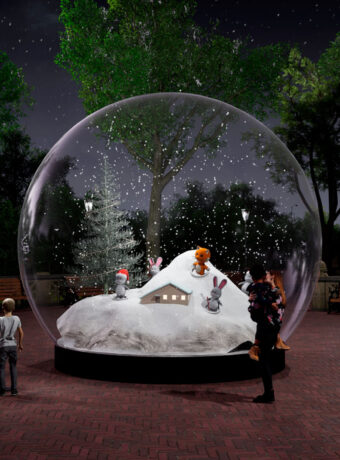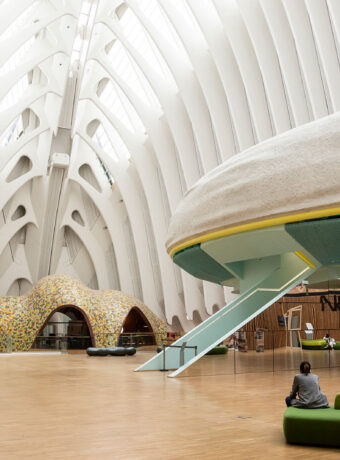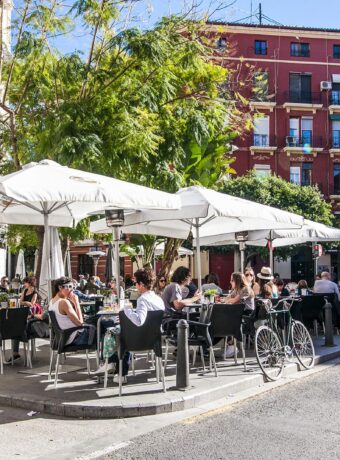Located in the Las Lagunas de la Mata y Torrevieja Natural Park, Torrevieja’s pink salt lake is not only a beautiful sight but also of great importance to the city. For generations, the pink lake has shaped the lives of Torrevieja’s inhabitants, nature and wine.
Already from the main road into Torrevieja, I can spot the giant salt mountains, which lie side by side along the shores of the pink salt lake (Laguna Rosa) in the natural park Las Lagunas de la Mata y Torrevieja.
I’ve gone to the Spanish east coast to delve into the history of the white salt grains extracted from the pink lake that has been of great importance to Torrevieja since Roman times.
However, I am very disappointed when I see the lake for the first time. Because from the road it doesn’t look pink at all, but blue. This is partly because I see it from a distance, where I can see the sky reflected in the lake. Rain can also change the colour of the lake, which changes from pale pink to deep pink and brownish purple depending on the light.
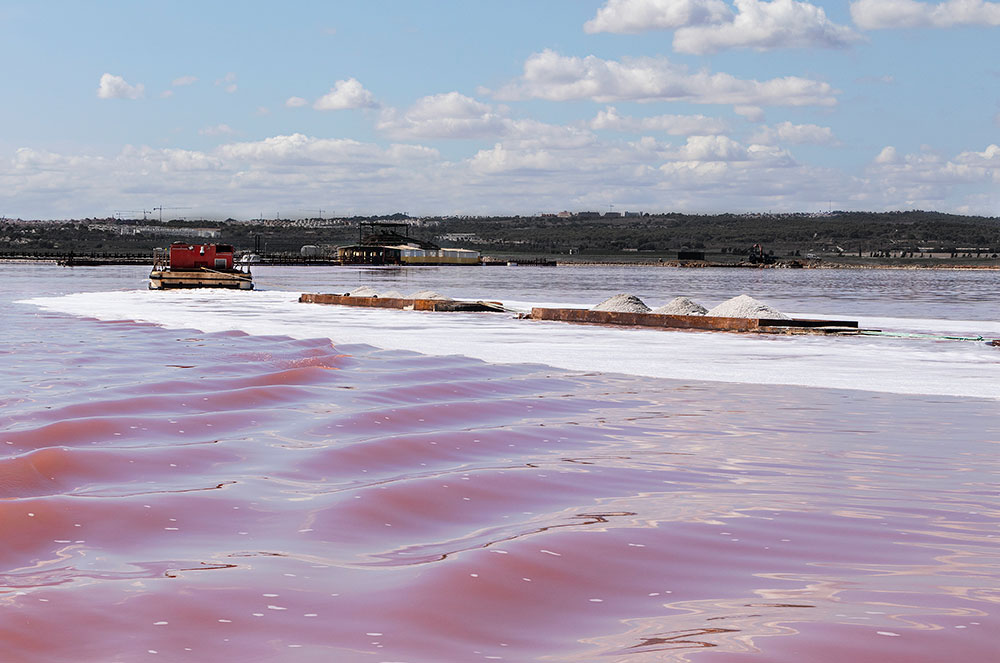
The pink water splashes, and the high salt content leaves long white trails in the water. I’m thrilled that I can now see that the lake IS pink.
– The pink colour of the lake is caused by the microorganisms archaea and the microalgae dunaliella, says Luis Diez, project manager at the Salinas salt plant. I’m sitting with Luis in a motorboat. He has invited me on a tour of the 1400-hectare salt lake to give me an insight into the workings of the salt factory.
Since Roman times, the white grains of salt that come from the lake have been of great importance to Torrevieja.
– We extract over 600,000 tonnes of salt a year, the largest production in Europe. About 50% is exported to Europe (mainly Denmark and Norway) and the USA. Most of the salt is used for salting roads (at airports, for example) and in industry, says Luis.
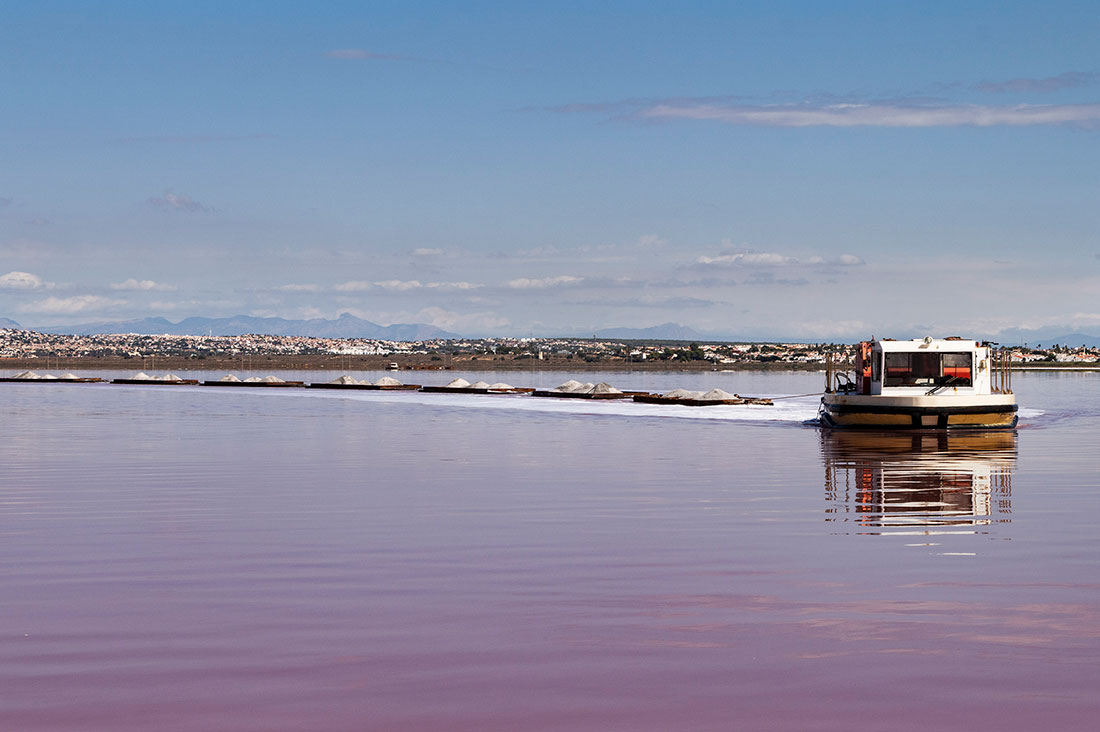
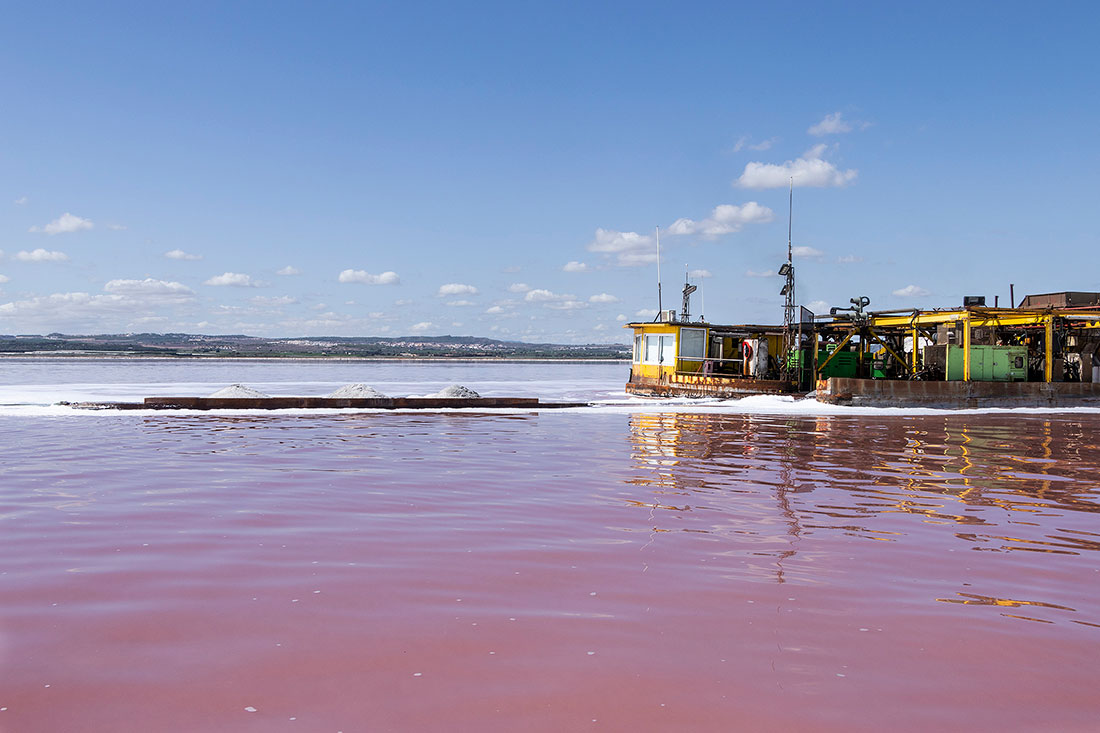
Towering salt mountains tower in Torrevieja
There are great views of Torrevieja, and only the sound of the motorboat disturbs the silence here in the middle of the lake. A giant GPS-controlled, tank-like machine uses a large blade that separates the salt from the clay on the lake bed to collect salt. The salt is then loaded onto barges, which are towed into a large hall where the salt is unloaded and cleaned.
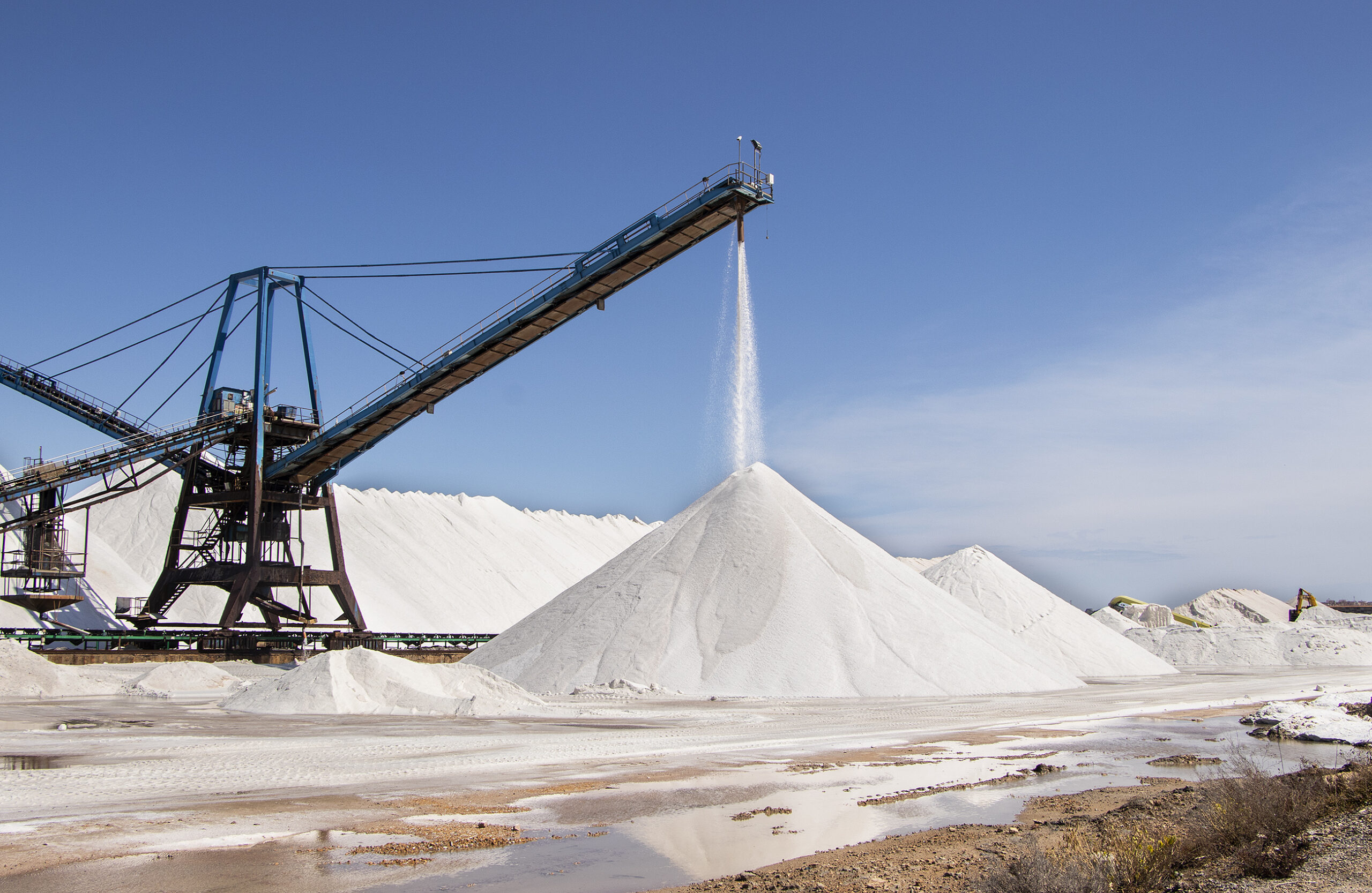
The salt is centrifuged before being stacked in salt domes up to 20 metres high on land.
– The salt is stacked in pyramid-shaped mounds, which provide protection from the weather as rainwater slides off. Before packing, the salt is sorted into wet and dry salt and by size, as the varieties are used for different purposes, says Luis, before we part in front of the warehouses, located close to the salt mountains.
It is not possible for tourists to sail on Laguna Rosa, as the lake is a workplace, but you can get out and see the lake and the salt mountains with a small tourist train that runs from Paseo de la Libertad in Torrevieja several times a day. Tickets can be bought on the train. Read more here.
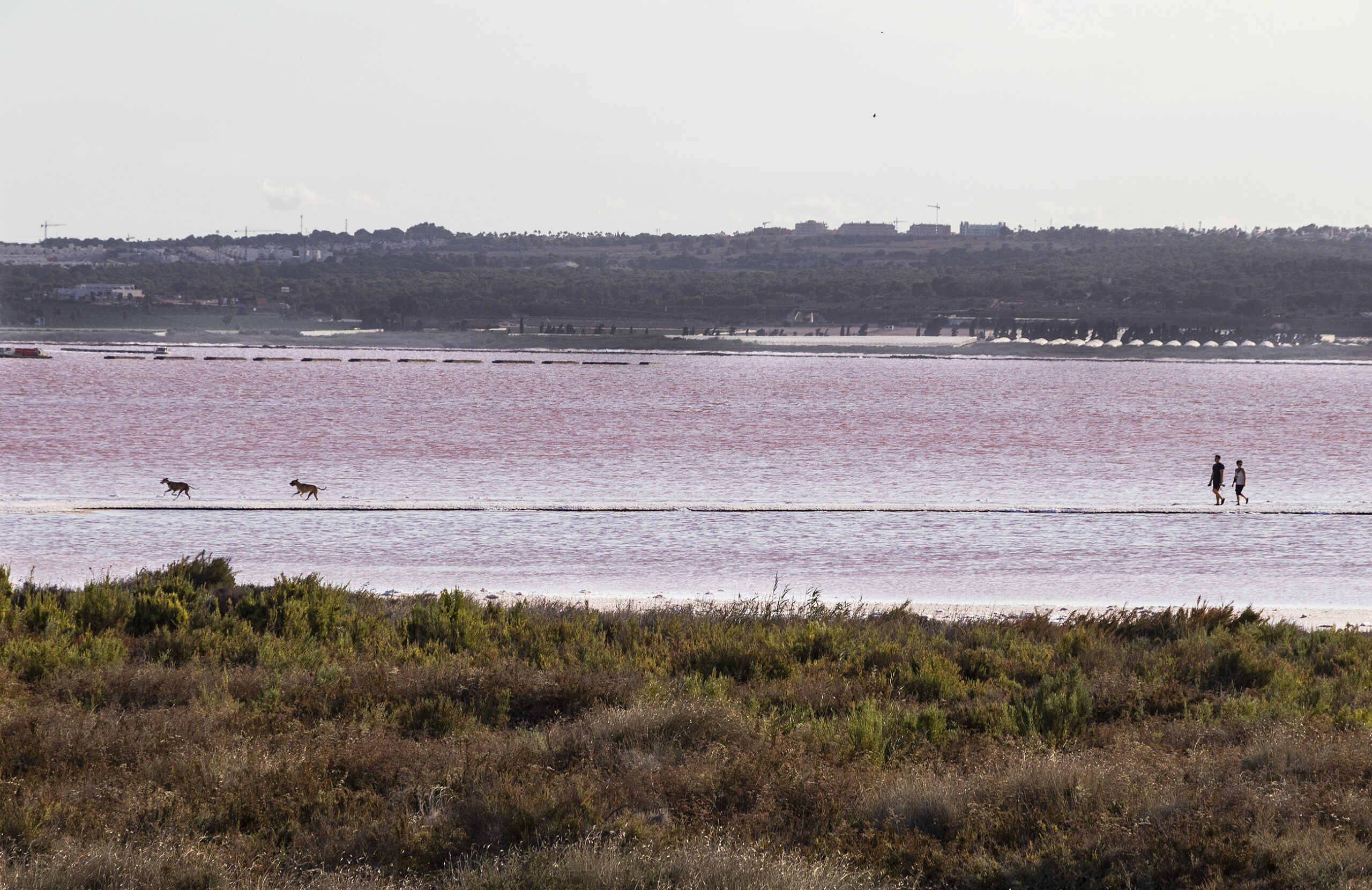 Lake with healing properties
Lake with healing properties
The pink lake is said to have healing properties, which attracts many tourists and locals who can’t resist jumping in the lake, even though bathing is prohibited as the area is private. However, there is a public entrance at the residential area, Calle Sol, where I, together with some locals, can walk along the lake with a view to the salt mountains on the other side of the lake.
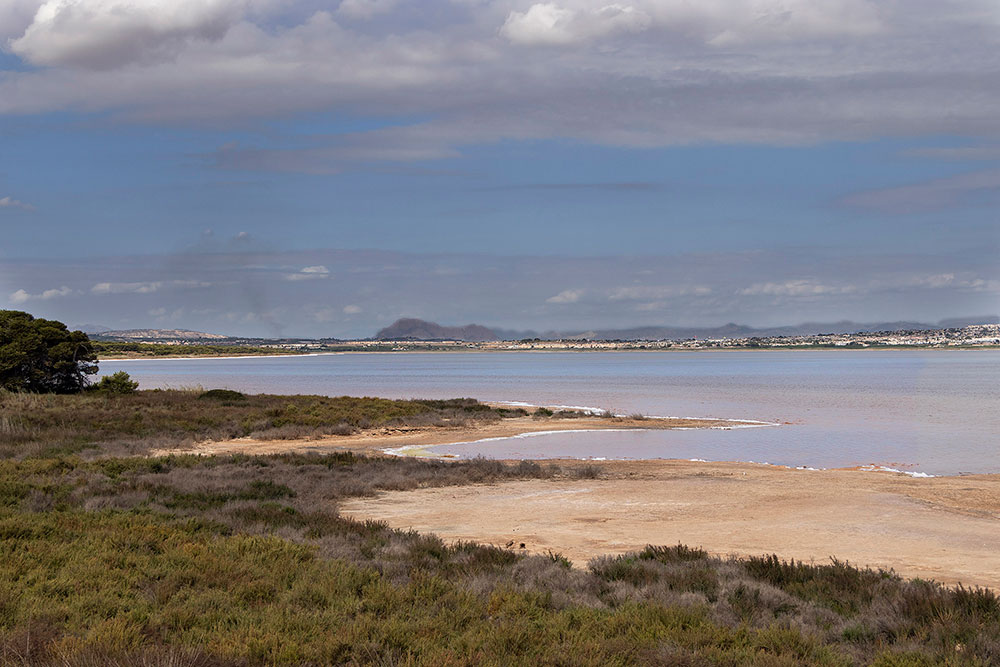 Blue lake with important function
Blue lake with important function
In the La Mata area of the Natural Park there is also a blue lake (Laguna Azul), close to the pink one, but only half as big. Here I meet the guide, Sakari Aukee, and we hop on mountain bikes and ride along the blue lake, which is also important for the salt industry.
– The salt is led from the sea, via a channel, into the blue lake and then on to the pink lake. As the water evaporates, the salt content increases from 30 grams of sodium chloride per litre when it is discharged from the sea to 300 grams per litre in the pink lake. You can see the salt lying under the foam there at the edge of the lake, says Sakari, as we stand at one of the many viewpoints, where you get a great view of the lake, the town and the mountains in the background.
On the way along the blue salt lake we meet many other cyclists and also several on horseback. The area is great for two-wheel or four-legged excursions, as you can get some exercise, enjoy the views and spot birds such as flamingos, herons, scaup, terns and other migratory water birds.
In the nature park, at the blue lake, there is a small information centre where you can get an overview of the park as well as information about the lakes, the salt, the flora and fauna.
Book an electric bike tour around the pink and blue lake here (advertising link)
 Torrevieja’s wine production is affected by salt
Torrevieja’s wine production is affected by salt
After the bike ride I meet Hilarión Peyaudé, co-owner of the winery, Sopla Levante. He has invited me wine tasting on the farm’s over 100 years old vineyards, which are located along the blue lake. I immediately notice that the vine leaves are brown and wilted at the edges.
– The leaves look burnt because the wind from the lake contains salt. The salt penetrates the grapes and gives the wines personality, says Hilarión.
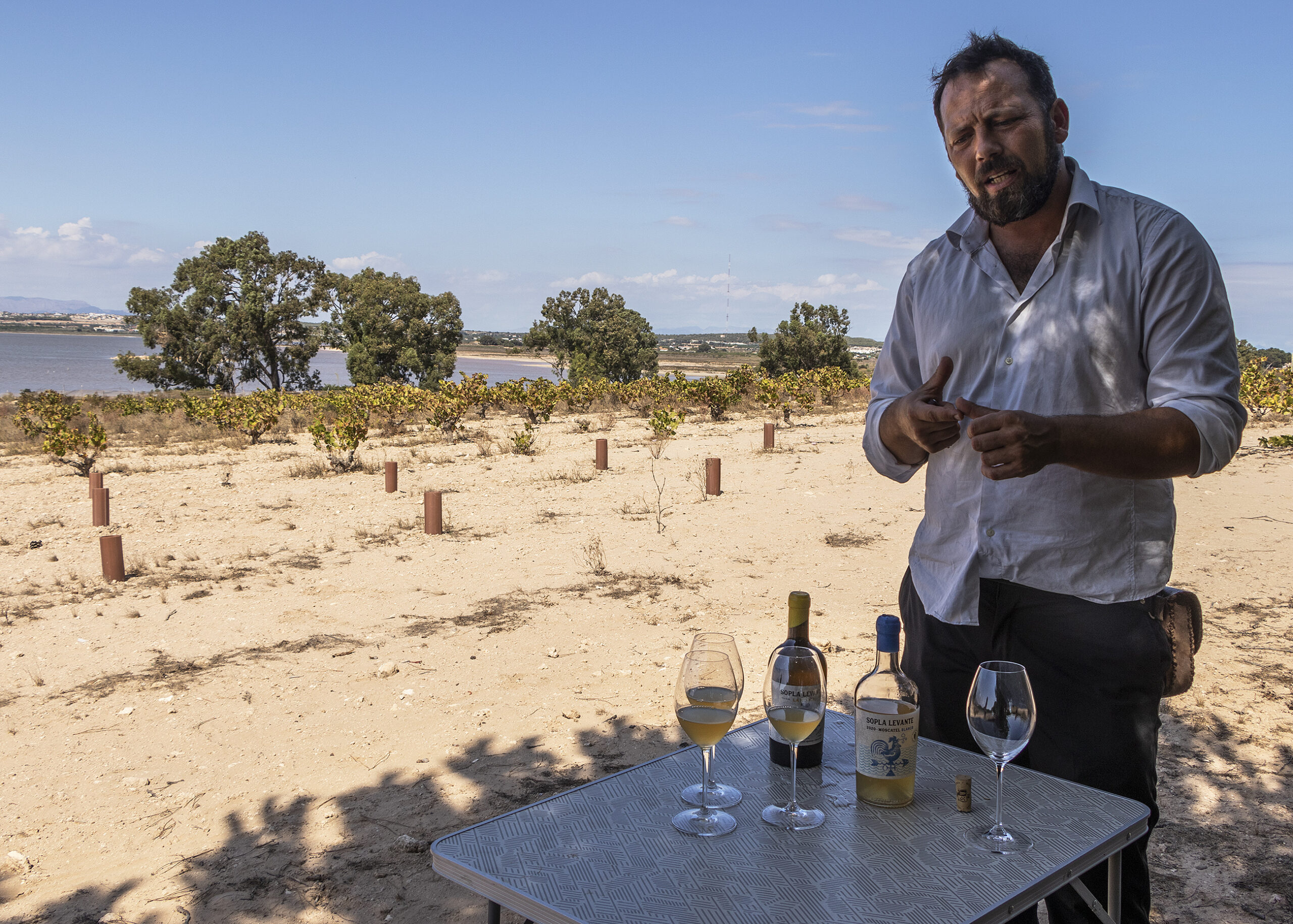
He then serves samples of two of the winery’s six wines, Blanco and La Horca, in which the merseguera grape plays the starring role. The first has a fresh and salty taste with tangy citrus, spiced with honey and white pepper. La Horca, which is blended with Muscatel, has a stronger salty and citrus flavour and a deep spicy taste of herbs.
– The microclimate is unique here, because it is the driest area in Europe, and together with the salt complex it makes the wines very special, Hilarión claims.
Sopla Levante organises wine tastings at their vineyards in the natural park if you are a group of at least four people. Read more and book a tasting.
 Dive into the history of the salt workers
Dive into the history of the salt workers
It was not until 1803 that salt production was industrialised in Torrevieja. Before then, all salt production was done by hand, and being a salt worker was hard physical, manual work. The salt was collected, hauled to the boats in large sacks and loaded by hand.
At the small Museo del Mar y de la Sal (Sea and Salt Museum) in Torrevieja town centre, old photographs and objects such as tools and a model of a salt storehouse document the time before machines took over. Some men stood in the water and collected the salt, while others loaded it onto wagons, which were driven to the port, where others loaded the salt onto boats.
In glass cases are fragile model ships, covered with salt, that artists created when they visited the city.
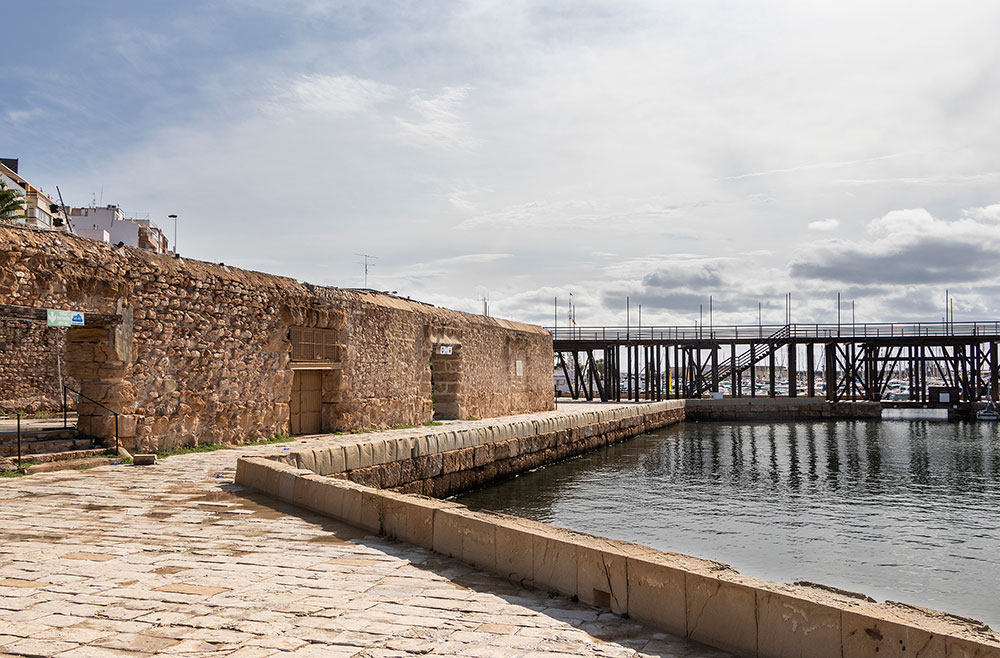
Behind it I can see the large modern tankers that today transport the salt further out into the world.
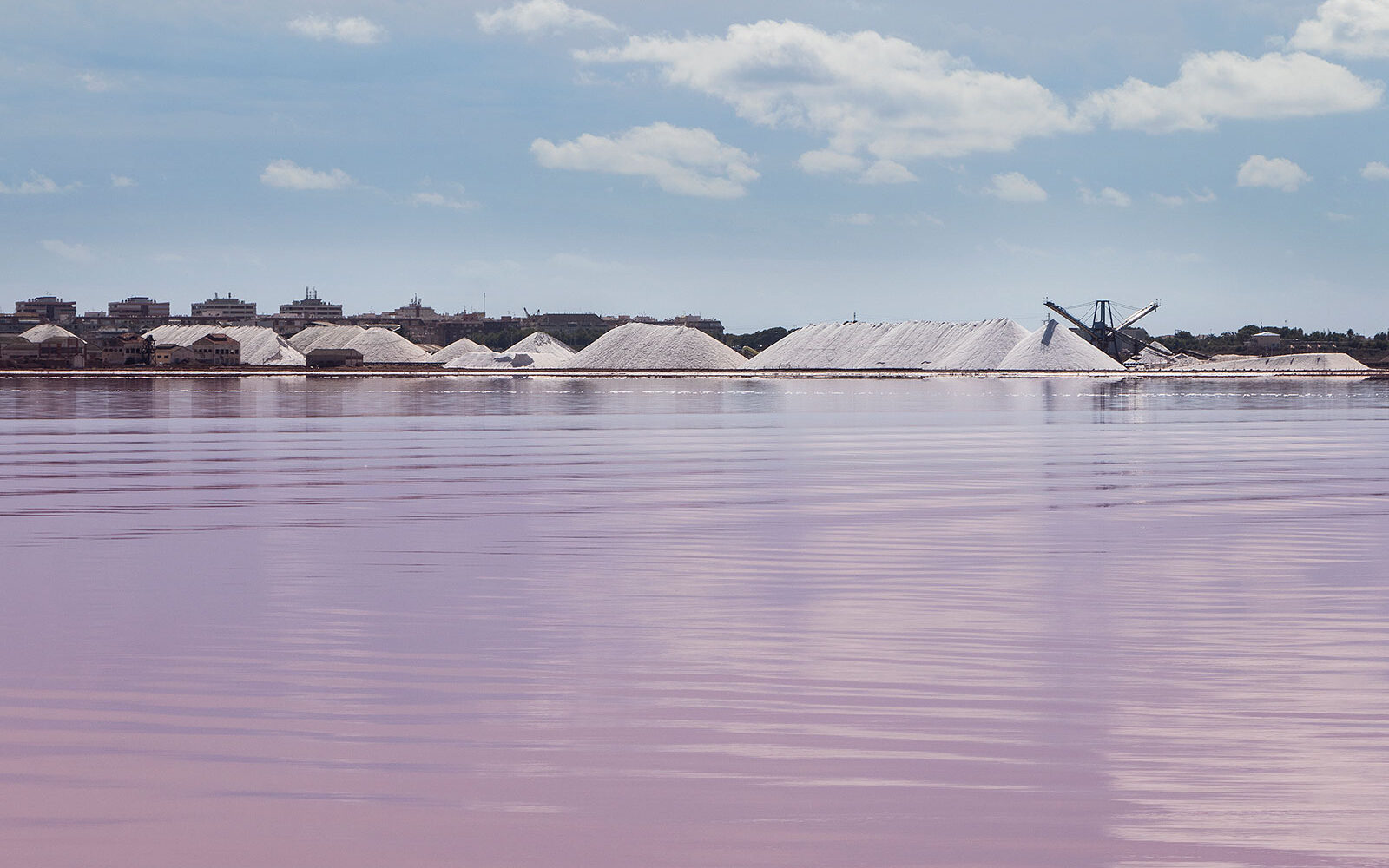
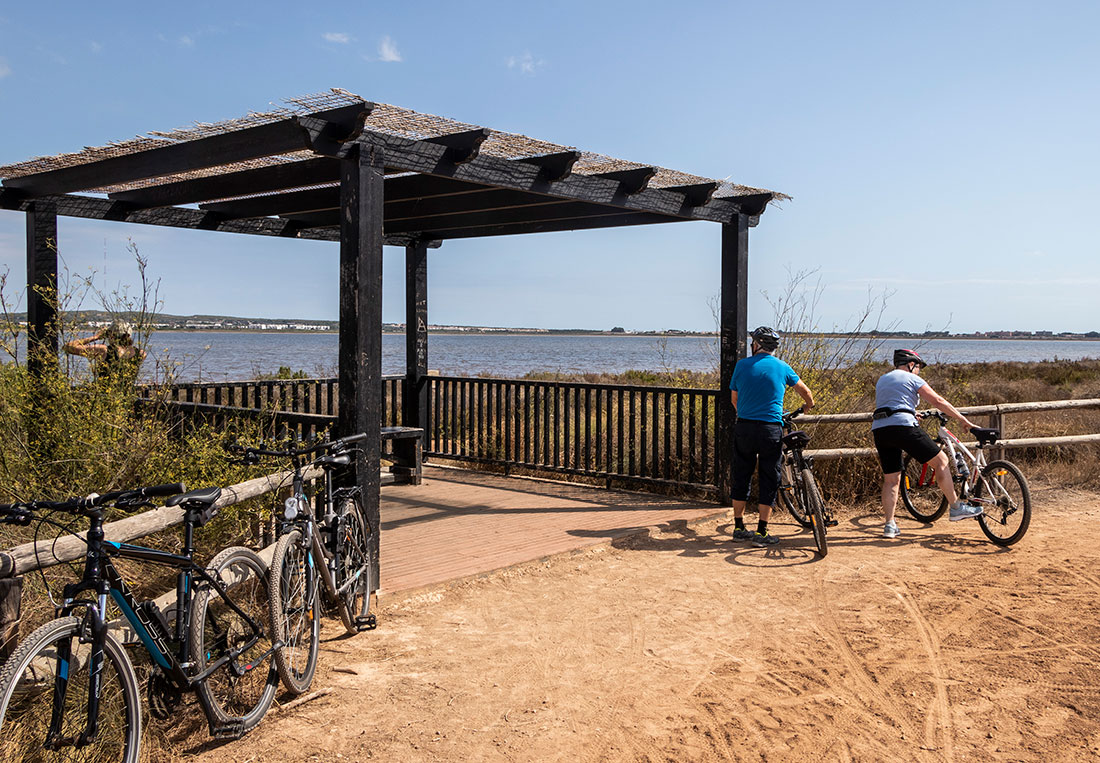
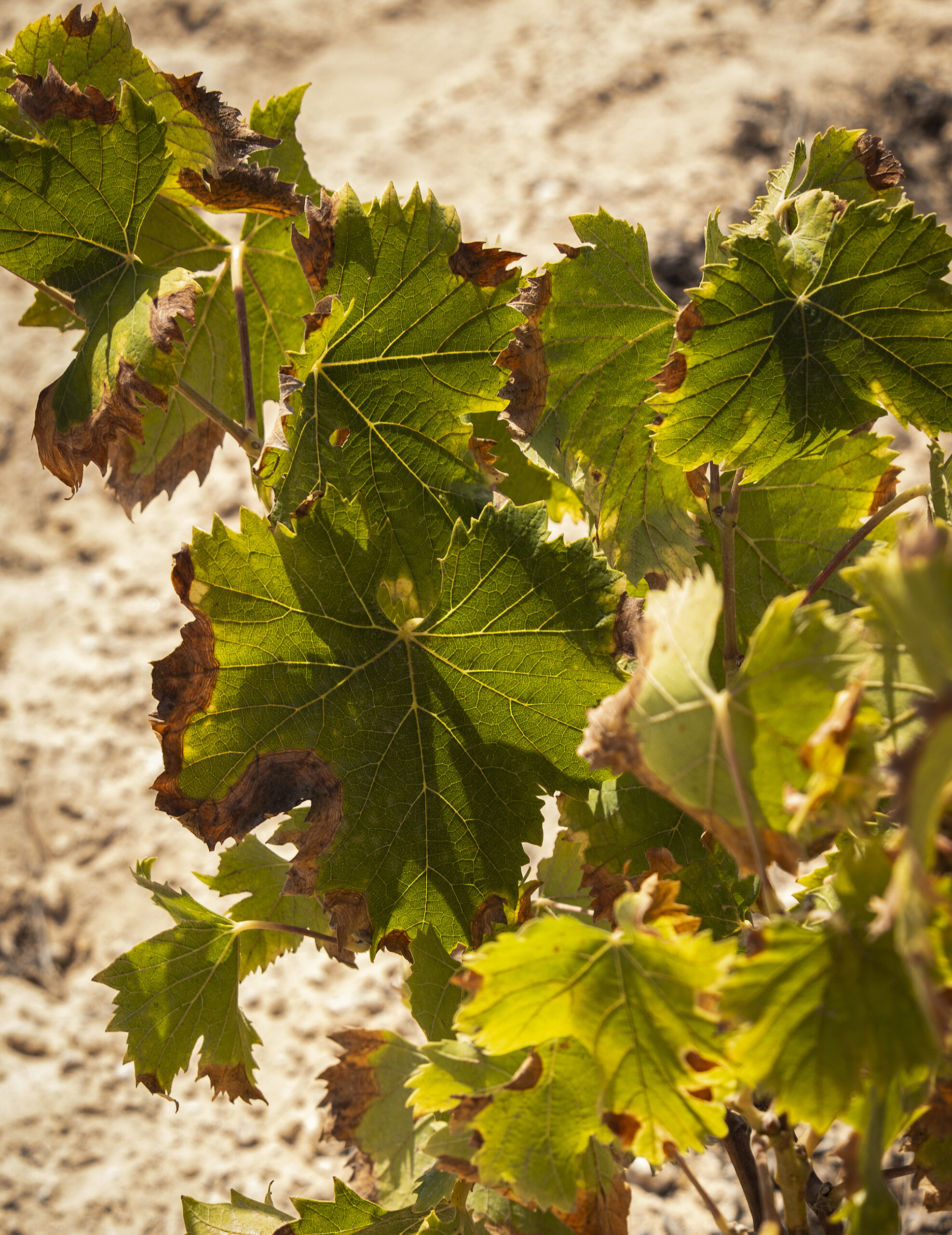 Torrevieja’s wine production is affected by salt
Torrevieja’s wine production is affected by salt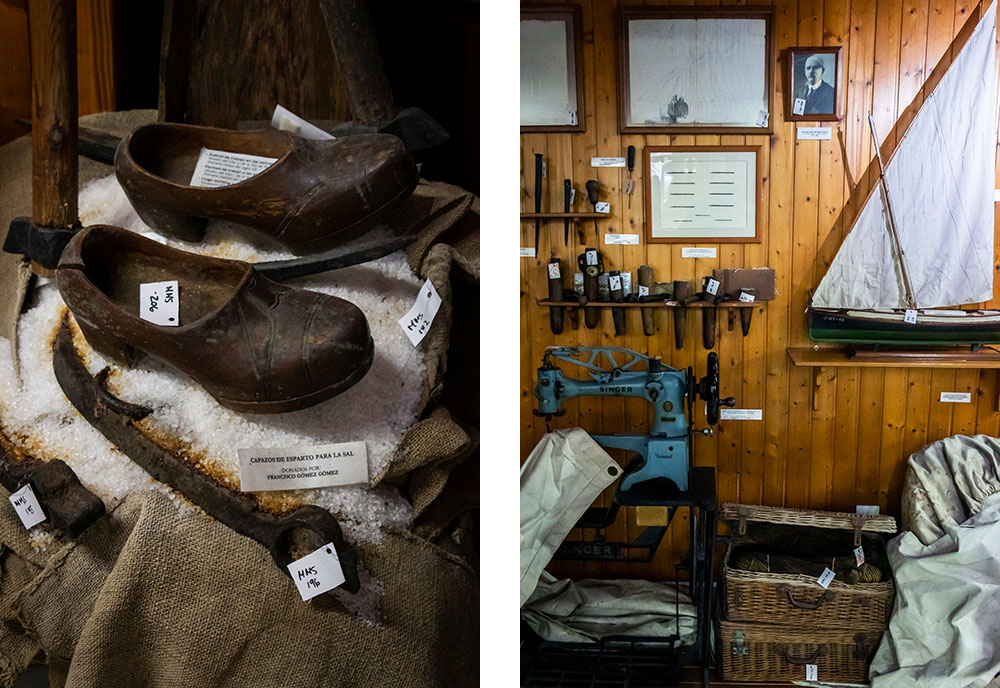 Dive into the history of the salt workers
Dive into the history of the salt workers